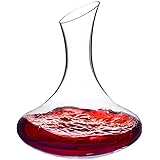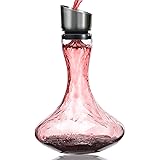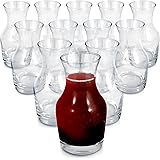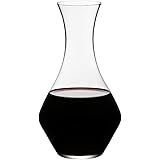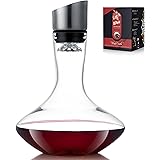The journey into homemade fruit wines is a rewarding one, offering a unique opportunity to capture the essence of a harvest in a bottle. As seen in the accompanying video, crafting your own damson wine can be a surprisingly straightforward process, provided you approach it with care and attention to detail. This guide aims to expand upon the foundational steps outlined, delving deeper into the nuances that elevate a simple batch of fermented fruit into a truly exceptional homemade vintage. Understanding the ‘why’ behind each step is as crucial as knowing the ‘how,’ ensuring a delicious and successful outcome for your homemade damson wine.
The Foundation: Selecting and Preparing Your Damsons for Wine
The quality of your finished damson wine begins long before fermentation, with the fruit itself. As the video briefly mentions, picking damsons after the first frost is not merely a traditional recommendation; it’s a practice rooted in sound fruit chemistry. This initial chill helps to break down the fruit’s cell walls, releasing more juice and flavor compounds. Crucially, it also often converts some of the fruit’s starches into sugars, contributing to a more robust fermentation and a richer, more complex flavor profile in your damson wine.
When selecting your damsons, aim for plump, unblemished fruit. While the video suggests approximately 2 kilograms, enthusiasts might consider adjusting this based on desired intensity or available fruit. Post-frost damsons tend to be softer, making the mashing process easier and yielding a fuller extraction of their unique tart-sweet character. Thorough washing is non-negotiable, removing any residual soil, insects, or debris. The meticulous removal of stems and leaves is equally vital, as these can introduce unwanted tannins or bitter flavors into your final damson wine.
Optimizing Damson Flavor and Sugar Content
Beyond the frost, the ripeness level significantly impacts the wine. Overly ripe damsons might lack the characteristic tartness that balances their sweetness, while underripe fruit can lead to an astringent wine. A balanced approach ensures a harmonious flavor. If fresh damsons are not immediately available, freezing them can replicate the cell-breaking effects of frost, making them more amenable to juice extraction when thawed. This foresight can ensure you’re never scrambling for prime fruit for your next batch of damson wine.
Essential Equipment for Crafting Quality Damson Wine
Success in home winemaking, particularly for specific fruit wines like damson wine, hinges on having the right tools and maintaining impeccable sanitation. The equipment list provided in the video – a fermentation bucket, airlock, and bottles – represents the core essentials. However, understanding the role of each piece and adhering to strict cleanliness protocols is paramount to avoiding spoilage and off-flavors.
1. **Primary Fermentation Bucket:** This food-grade container is where the initial, vigorous fermentation takes place. Its wide opening facilitates easy mashing of the damsons and mixing of ingredients. The capacity should be sufficient to accommodate your fruit, sugar solution, and active yeast without overflowing due to foam. 2. **Airlocks:** These ingenious devices are critical for allowing carbon dioxide produced during fermentation to escape while preventing airborne contaminants and oxygen from entering. An airlock creates a one-way valve, protecting your developing damson wine from detrimental microbial invaders. 3. **Demi-johns (or Carboys):** These narrower-necked glass or plastic vessels are ideal for secondary fermentation. Their reduced surface area exposed to air minimizes the risk of oxidation as the fermentation slows and the wine clarifies. 4. **Siphoning Equipment:** A long auto-siphon or a simple plastic tube is essential for racking the wine off the sediment without disturbing it. Precision here helps achieve clarity and prevents undesirable flavors from being incorporated into the finished wine. 5. **Bottles:** Sterilized glass bottles are the final home for your damson wine. Whether corked or capped, they must be perfectly clean to prevent contamination during storage.
The Golden Rule: Sanitation in Winemaking
The video rightly stresses that “cleanliness is crucial.” This extends beyond simply washing equipment; it means sanitizing every piece of equipment that will come into contact with your must (the unfermented juice) or wine. Common sanitizers like Star San, metabisulfite solutions (like Campden tablets dissolved in water), or specialized winemaking sanitizers effectively kill wild yeasts, bacteria, and molds that could otherwise ruin your batch. Failing to sanitize can lead to a range of issues, from unpleasant off-flavors and cloudy wine to a completely spoiled batch, underscoring its importance for your damson wine.
The Primary Fermentation: Unlocking the Essence of Damson
With your damsons prepped and equipment sanitized, the primary fermentation stage is where the magic truly begins. This is the period of most vigorous activity, where yeast converts sugars into alcohol and carbon dioxide, laying the foundation for your damson wine.
1. **Mashing the Fruit:** Gently mashing the damsons, as suggested, maximizes the surface area for the sugar solution and yeast to interact with the fruit. This process extracts the rich damson flavor, color, and natural acids that will define your wine. A potato masher works well, but for larger batches, a sturdy spoon or even clean hands can suffice. The goal is to break the skins and expose the pulp without pulverizing the stones, which can release unwanted bitter compounds. 2. **Creating the Must:** Dissolving 1 kilogram of sugar in 4 liters of boiling water creates a concentrated sugar solution (syrup). Pouring this hot solution over the mashed damsons helps further extract flavors and pasteurize the fruit slightly, inhibiting unwanted microbial growth before the wine yeast takes over. The sugar content directly correlates to the final alcohol percentage and body of your damson wine. 3. **Temperature Control and Yeast Pitching:** Allowing the must to cool to around 20 degrees Celsius (approximately 68°F) before adding the wine yeast is critical. Higher temperatures can kill the yeast, while excessively cold temperatures can shock it, leading to a sluggish or “stuck” fermentation. The choice of wine yeast also impacts the final product; common strains like Lalvin EC-1118 or Côte des Blancs are robust and reliable for fruit wines, influencing the aroma, flavor, and alcohol tolerance of your damson wine. Stirring the yeast in well ensures even distribution and a strong start to fermentation. 4. **Airlock in Place:** Once the yeast is added and the bucket covered, fitting an airlock is non-negotiable. This setup allows the vigorous production of CO2 to escape, preventing pressure buildup, while simultaneously safeguarding your must from oxygen exposure and airborne contaminants during the initial active phase of fermentation, typically lasting about 5 days.
Secondary Fermentation (Racking): Clarifying Your Homemade Wine
After the initial burst of activity in the primary fermentor, the process of “racking” is vital for the continued development and clarification of your damson wine. This step, typically occurring after about 5 days, involves carefully separating the fermenting liquid from the bulk of the spent yeast and fruit pulp, known as the “gross lees.”
1. **The Art of Racking:** Using a siphon, transfer the liquid into a clean, sanitized demijohn, taking extreme care not to disturb the sediment at the bottom of the primary bucket. This separation prevents the wine from sitting on decaying yeast cells and fruit pulp, which can lead to off-flavors (autolysis) and an undesirable yeasty aroma. The demijohn, with its narrower neck, minimizes the surface area of the wine exposed to air, further reducing the risk of oxidation during the slower secondary fermentation. 2. **Continued Fermentation and Clarification:** Fitted with an airlock, the demijohn should be placed in a cool, dark place. The cooler temperature (typically 15-18°C or 59-64°F) encourages a slower, more controlled fermentation, which helps preserve delicate fruit aromatics and encourages better yeast flocculation (settling). Over the next 3 to 4 weeks, the remaining sugars are converted, and finer sediment (fine lees) will gradually settle at the bottom. This natural clarification process is fundamental to producing a bright, clear damson wine.
Stabilization and Bottling: Preserving Your Damson Wine
Once secondary fermentation is complete and your damson wine appears largely clear, the final stages of stabilization and bottling are crucial for ensuring its longevity and quality. This phase prepares the wine for aging and consumption.
1. **Final Racking and Stabilization:** A second racking is often beneficial to achieve maximum clarity, removing any remaining fine sediment. At this point, stabilization agents are typically added. The video mentions Campden tablets (potassium metabisulfite) and potassium sorbate. * **Campden tablets** serve a dual purpose: they act as an antioxidant, protecting the wine from browning and oxidation, and as an antimicrobial agent, inhibiting unwanted bacteria and wild yeasts. * **Potassium sorbate** prevents refermentation in the bottle, especially if the wine retains any residual sugar. It inhibits yeast reproduction, ensuring your wine remains still and stable. These additions are vital steps in preventing spoilage and ensuring the wine’s character remains consistent over time. 2. **Clearing and Conditioning:** After stabilization, allow the wine to sit for several weeks. This period permits any last suspended particles to settle, resulting in a sparkling clear wine. Some winemakers may opt for fining agents or cold crashing (chilling the wine to a very low temperature) to accelerate clarification, though natural settling is often sufficient for home batches of damson wine. 3. **Bottling with Precision:** When the wine is perfectly clear, carefully siphon it into sterilized bottles. Leaving about 1 inch of headspace is critical. This space accommodates thermal expansion and contraction of the wine, preventing corks from being pushed out or bottles from cracking. It also provides a small buffer against slight variations in fermentation that might still occur. Corking or capping the bottles securely creates an airtight seal, preserving the wine’s delicate aromas and preventing oxidation. Thorough sanitization of the bottles and closures is, once again, paramount to prevent any last-minute contamination.
The Art of Aging Damson Wine
While technically “ready to enjoy” upon bottling, the true potential of most fruit wines, and especially damson wine, is unlocked through proper aging. Unlike commercially produced grape wines that might require years, many fruit wines, including damson, benefit significantly from several months to a year or more of cellar time.
Aging allows the various flavors and aromas to meld and integrate, mellowing any harsh notes and developing a deeper, more complex character. The initial tartness of damsons can soften, and the fruity esters can evolve into more sophisticated profiles. Storing your bottled damson wine in a cool, dark place with a consistent temperature is ideal. Fluctuations in temperature can stress the wine and lead to premature aging or spoilage. Patience in this final stage will be amply rewarded with a truly distinguished homemade damson wine, a testament to your efforts from orchard to bottle.



